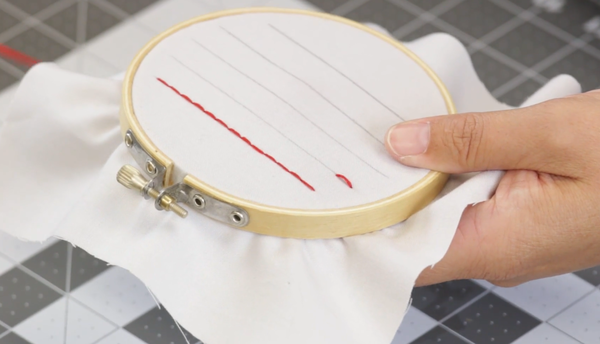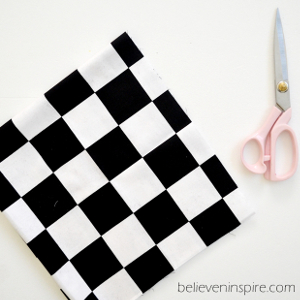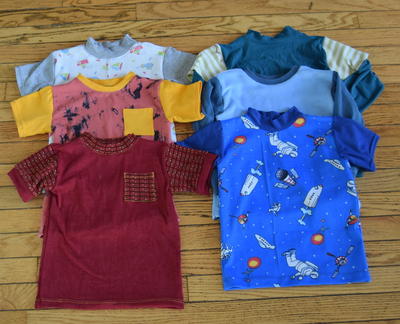What are Basic Sewing Skills?
When you're a beginner to sewing, it can be intimating because there's so much terminology and little things that can make or break your project. However, the learning curve shouldn't stop you from exploring what you can do with sewing because it's such a versatile skill that can help you save a shirt you love or make a toy for your kids.
That's why below we've put together some of the most basic sewing skills that are necessary to becoming a better sewist.
No matter your experience level and how many projects you've done these are the basics from which everything else is built upon. Without these skills, no one could ever make anything.
With these basic skills, you'll have the groundwork on which to build your sewing capabilities no matter what type of sewing (from embroidery to quilting to fixing a rip) you decide to do.
Sign Up For More Free Patterns

Threading a Needle
While this step may seem like a no-brainer and obvious, it cannot be stated enough how important it is that you thread your needle correctly. The first and most important step is to make sure you are using the right needle for the thread you are working with.
Not all needles are created equally and if you have a needle which has a thinner eye than your thread you are going to have a difficult time threading it. Once you've made sure that you have the correct needle size for your thread, unspool your thread as much as you need and cut, at an angle, with sharp scissors. This will make sure your thread does not fall apart.

If you're having difficulty getting the thread through the eye, we have a couple of hacks to make it simpler. You can put white paper behind the needle to create contrast so it's easier to see or try the tried and true method of stiffening the thread with a bit of saliva.
Also, needle threaders! These tools come in basic and traditional manual versions or you can look into automatic threaders. Learn more about threaders and how to use them with our guide, How to Use a Needle Threader.
Sewing a Straight Stitch
While using a sewing machine can make sewing a straight line simple sometimes a machine isn't right for a project and you need to do it by hand. That's why mastering the basic skill of sewing straight incredibly important. Practice makes perfect here and the best way to mastery is simply by practicing stitching.
Taking a piece of fabric, drawing straight lines with a ruler, and stitching along that line will train you to sew straight. You can even start to space out the line so you have to sew straight between two marks as you get better at it.
Keep practicing, making more and more space between your marks, until you can sew in a straight line without any help at all. While it may not seem important now, the basics are what you build all your sewing skills on.
Learn more and practice with our guide, How to Sew a Straight Line by Hand.

Sewing a Button
If you're a sewist chances are someone has asked you to sew a button before. It's one of the most important tricks to learn because it is so useful when one pops off your shirt!
When sewing a button the first thing is to make sure you choose your thread well, you don't want to use a bright color thread on a white shirt (unless you're going for a statement) so try and match it.
The way you sew depends on what type of button you are using, but the most common are 2 or 4-hole buttons. Both of those techniques are very similar, just with a four hole button you alternate between the holes so they form a 'X' on the front to keep it secure. For a 4-hole button check out this tutorial and for a 2-hole button check out this tutorial.

For all hand sewn buttons it is important to remember that there is some room between the fabric and the button so when it goes through the buttonhole it does not pull on the fabric unnecessarily. A great tip, mentioned in those tutorials, is to put a pin underneath the thread on the topside of the button so when you remove it there's some excess thread.
Using a Pattern
Once you decide what you want to sew you're likely going to use a pattern to help guide you. Sewing patterns are incredibly useful for making sure your project turns out how you want it, but they can be difficult to understand and it's important to learn how to use one properly.
There are two types of sewing patterns, paper and digital. Paper ones are the more traditional one and you buy them in a package to use. Digital patterns are becoming more common, however, and can be simply printed off and assembled at home.
Both work and can be used to make amazing garments it just depends on preference and what you have available. Learn more by reading our guide, How to Use Sewing Patterns (Digital & Traditional).

When using patterns you have the option of cutting your paper to then pin on your fabric for ease or you can trace over it on the fabric, which is especially helpful if there are no seam allowances on the pattern.
These are only a few tips for using a sewing pattern, but here you can read more in depth on how to use a sewing pattern.
Benefits of Basic Sewing Skills Infographic
Want even more information? Learn about the benefits of sewing and how you can start stitching in this article, How Does Someone Benefit From Basic Sewing Skills?
We also have a handy infographic that can be pinned on Pinterest, saved to your computer, or printed and hung in your sewing room! Just click the image or the button below to get your copy.

Want More?
Read Next50+ Sewing Crafts That Sell Well





![Know Your Skirts Guide [Infographic]](http://irepo.primecp.com/2021/10/509029/Know-Your-Skirts-Infographic-square21-nw_Large400_ID-4536247.png?v=4536247)












